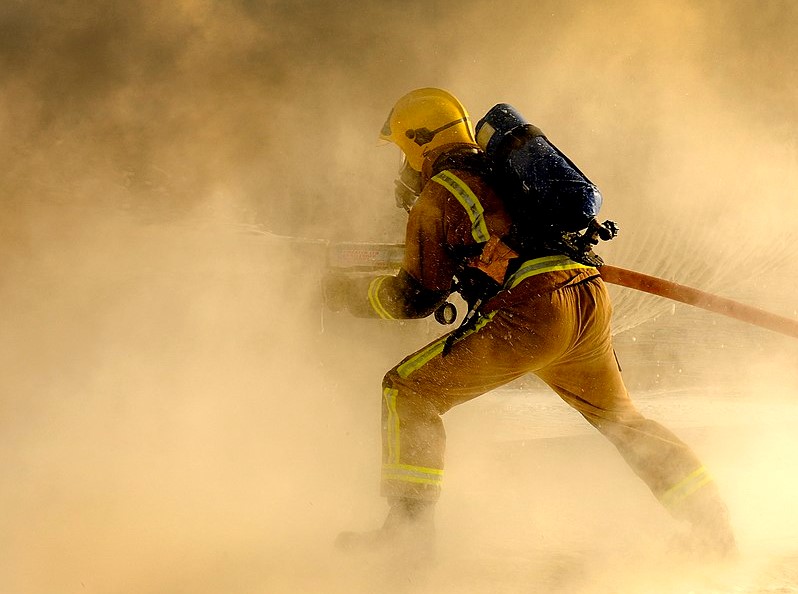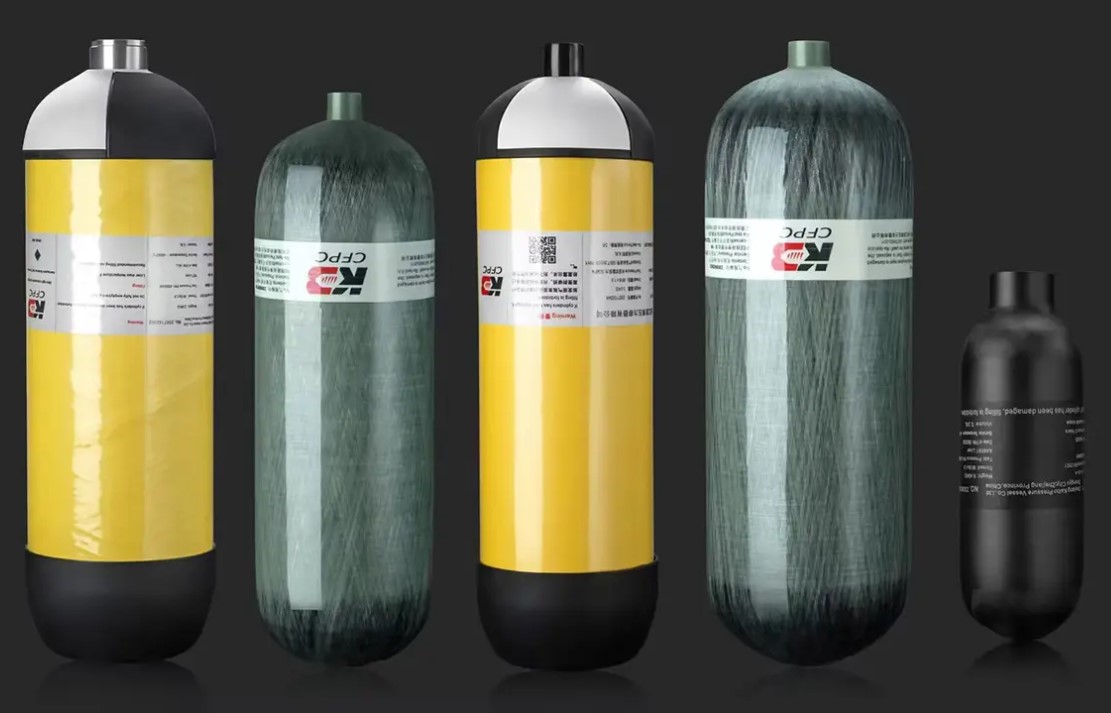Self-Contained Breathing Apparatus (SCBA) cylinders play a vital role in firefighting, search-and-rescue operations, and other high-risk scenarios involving toxic or low-oxygen atmospheres. SCBA units, particularly those with carbon fiber composite cylinders, provide a lightweight, durable solution for carrying breathable air into dangerous environments. However, the critical question often arises: is it safe to enter a smoke-filled area if the SCBA cylinder is not fully charged? This article delves into the safety considerations, performance factors, and operational importance of a fully charged SCBA in smoke-filled areas, emphasizing the carbon fiber air tank’s role in ensuring user safety.
Why Fully Charged SCBA Cylinders Matter
Entering a smoke-filled or hazardous area with an SCBA cylinder that isn’t fully charged is typically inadvisable due to several safety and operational concerns. For rescue personnel and firefighters, ensuring their equipment operates optimally under extreme conditions is crucial. Here’s why having a fully charged cylinder is essential:
- Limited Breathing Time: Each SCBA cylinder has a finite air supply designed to last a specific duration under standard breathing conditions. When the tank is only partially filled, it offers less breathing time, potentially putting the user at risk of running out of breathable air before exiting the danger zone. This reduction in time could lead to a dangerous situation, especially if unforeseen delays or obstacles arise during a mission.
- Unpredictable Nature of Smoke-Filled Environments: Smoke-filled areas can present numerous physical and psychological challenges. Reduced visibility, high temperatures, and unknown obstructions are common hazards, increasing the time needed to navigate these spaces. Having a fully charged tank provides a margin of safety, ensuring that the user has enough time to address unexpected circumstances safely.
- Ensuring Regulatory Compliance: Safety protocols for firefighting and hazardous environments often require SCBA units to be fully charged before entry. These standards, established by fire departments and regulatory agencies, are designed to minimize risks and protect rescue personnel. Failing to comply with these regulations not only endangers lives but may also lead to disciplinary action or regulatory penalties.
- Alarm Activation and Psychological Effects: Many SCBA units are equipped with low-air alarms, which alert the user when the air supply is nearing depletion. Entering a hazardous area with a partially charged tank means this alarm will trigger sooner than expected, potentially causing confusion or stress. A premature alarm could create unnecessary urgency, affecting decision-making and overall efficiency during an operation.
The Role of Carbon Fiber Composite Cylinders in SCBA Units
Carbon fiber composite cylinders have become the preferred choice for SCBA systems due to their lightweight design, strength, and resistance to extreme conditions. Let’s examine some of the advantages and characteristics of carbon fiber air tanks, especially in terms of their application in life-saving equipment.
1. High Pressure Capacity and Durability
Carbon fiber tanks are designed to withstand high-pressure ratings, commonly around 300 bar (4350 psi), providing firefighters with sufficient breathable air for their missions. Unlike steel tanks, which may be heavier and harder to transport, carbon fiber cylinders offer a balance between pressure capacity and ease of movement, which is essential in situations requiring agility and speed.
2. Lightweight and Portable
The lightweight nature of carbon fiber makes it easier for rescuers to carry their SCBA units without excessive fatigue. Every extra pound can make a difference, especially during prolonged missions or while navigating complex structures. The reduced weight of carbon fiber cylinders allows users to conserve energy and remain focused on their tasks rather than being burdened by heavy equipment.
3. Enhanced Safety Features
Carbon fiber cylinders are built to endure harsh conditions, including extreme temperatures, impacts, and other physical stresses. They are less likely to deform or rupture under high pressure, making them safer for firefighters in situations where the tank might face sudden pressure fluctuations. Furthermore, the strength of carbon fiber reduces the risk of tank failure during critical moments.
4. High Cost but Long-Term Value
While carbon fiber cylinders are more expensive than traditional steel or aluminum tanks, their durability and performance offer long-term value. The investment in quality SCBA equipment ultimately enhances safety and efficiency, providing dependable protection in life-threatening situations. For agencies that prioritize personnel safety, the cost of carbon fiber tanks is justified by their reliability and longevity.
Risks of Using a Partially Filled SCBA Cylinder in Smoke-Filled Areas
Using a partially filled cylinder in a hazardous environment introduces several significant risks. Here’s an in-depth look at these potential dangers:
- Insufficient Breathing Air: A partially filled cylinder provides less air, which could lead to a situation where the user is forced to retreat prematurely or, worse, is unable to exit before the air supply runs out. This situation is particularly dangerous in smoke-filled areas, where low visibility and hazardous conditions already pose severe challenges.
- Increased Likelihood of Emergency Situations: Smoke-filled environments can be disorienting, even for seasoned professionals. Running low on air earlier than expected may lead to panic or poor decision-making, increasing the risk of accidents. Having a fully charged SCBA cylinder provides psychological comfort and allows the user to remain calm and focused on navigating the environment.
- Impact on Team Operations: In a rescue operation, each team member’s safety impacts the overall mission. If one person needs to exit early due to insufficient air, it can disrupt the team’s strategy and divert resources from the primary objective. Ensuring all cylinders are fully charged before entering a hazardous area allows for coordinated efforts and reduces unnecessary risks.
Conclusion: Why a Fully Charged SCBA Cylinder Is Essential
In summary, entering a smoke-filled area with an SCBA cylinder that isn’t fully charged can endanger both the user and the mission. Carbon fiber air tanks, with their durability and high-pressure capacity, are well-suited to provide a reliable air supply in such environments. However, even the best equipment can’t compensate for an inadequate air supply. Safety regulations exist for a reason: they ensure that every rescue professional has the best chance of completing their mission safely.
For organizations invested in safety and operational efficiency, enforcing a policy that mandates fully charged cylinders is crucial. With the advent of carbon fiber composite cylinders, SCBA systems have become more efficient and easier to manage, yet the importance of a fully charged air supply remains unchanged. Ensuring the readiness of SCBA units before any high-risk operation not only maximizes the equipment’s capabilities but also upholds the safety standards that every rescue mission demands.
Post time: Nov-14-2024


